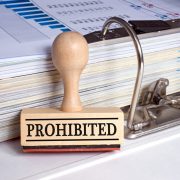Essential Rules for Brokerage Accounts within a Self-Directed IRA
When someone asks whether they can still buy traditional stocks within a Self-Directed IRA, the answer is a definitive yes. However, it’s important to know the lay of the land before beginning. After all, a Self-Directed IRA arrangement is a unique setup in which you’ll be in charge of your own retirement decisions. That means broader investment access to nontraditional retirement assets including real estate, precious metals, and even private stock. But what if you want to invest in public stocks like the majority of folks with a retirement account? Then there are some things that you’ll need to know.
The Rules to Remember for Self-Directed IRA Brokerage Accounts
The idea is simple; you’ll use a brokerage account held within a Self-Directed IRA to invest in the stocks of your choosing. However, you’ll want to keep a few things in mind, as we point out at our page on brokerage accounts:
- Your account can’t risk going below a $0 balance. This means that you won’t be using leverage within the stock account, which could potentially end up with you owing money to the brokerage. If you had dreams of using retirement money to invest in stock options such as call options and put options, that means that you’ll have to stick to a more traditional buy-and-hold or buy-and-sell model.
- When transferring or converting the account, you’ll have to liquidate the assets first. You cannot do “in-kind” transfers. What do we mean by this? Let’s say you’re converting the Self-Directed IRA itself from another provider to American IRA. What do you do with the stocks? Be sure to talk with an accountant or legal professional first because there are rules in place that say you will most likely have to liquidate your stocks before moving them between accounts.
- Remember that your IRA is a separate entity. One of the key mistakes a Self-Directed IRA investor can make before they get started is assuming that holding something within a retirement account is enough to make it a retirement investment. And on the surface, this seems accurate. After all, isn’t that the only requirement? Well, not exactly. If you have a Self-Directed IRA, you’re also obligated to use the retirement assets within that account as just that, retirement assets. Meaning that these investments are for future benefit, not current benefit. In other words, all profit accrued from investments made by your Self-Directed IRA must stay within the retirement account until you are of age to take distributions. The profits can be re-invested by the Self-Directed IRA, however they cannot be withdrawn until you have hit retirement age.
- You can’t set up your own brokerage account. This one doesn’t sound intuitive. Can’t you open an account at your own behest? It’s certainly easy to open a Roth IRA, for example. Well, opening the brokerage is a little different. You can’t open a brokerage account on the behalf of your Self-Directed IRA, as this could cause a taxable event. That, in turn, can be construed as a prohibited transaction by the IRS.
How to Open a Brokerage Account the Proper Way
If you work with a Self-Directed IRA administration firm like American IRA, we can set up a fiduciary Brokerage account per your direction. What does this mean? It means you’ll get full control over trading, but you didn’t handle the paperwork yourself, so you didn’t open an account on behalf of your IRA. We did. With your IRA then owning the brokerage account, you’re free to make the retirement decisions you want to make. Of course, it requires having a good knowledge of how it all works.
Interested in learning more about Self-Directed IRAs? Contact American IRA, LLC at 866-7500-IRA (472) for a free consultation. Download our free guides or visit us online at www.AmericanIRA.com.








